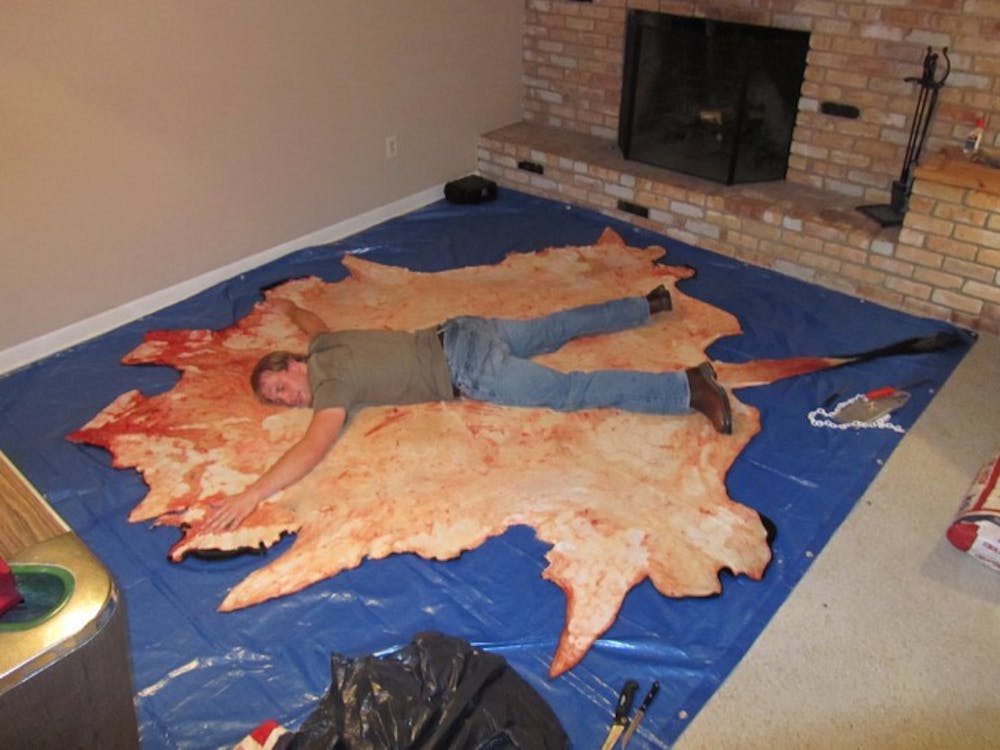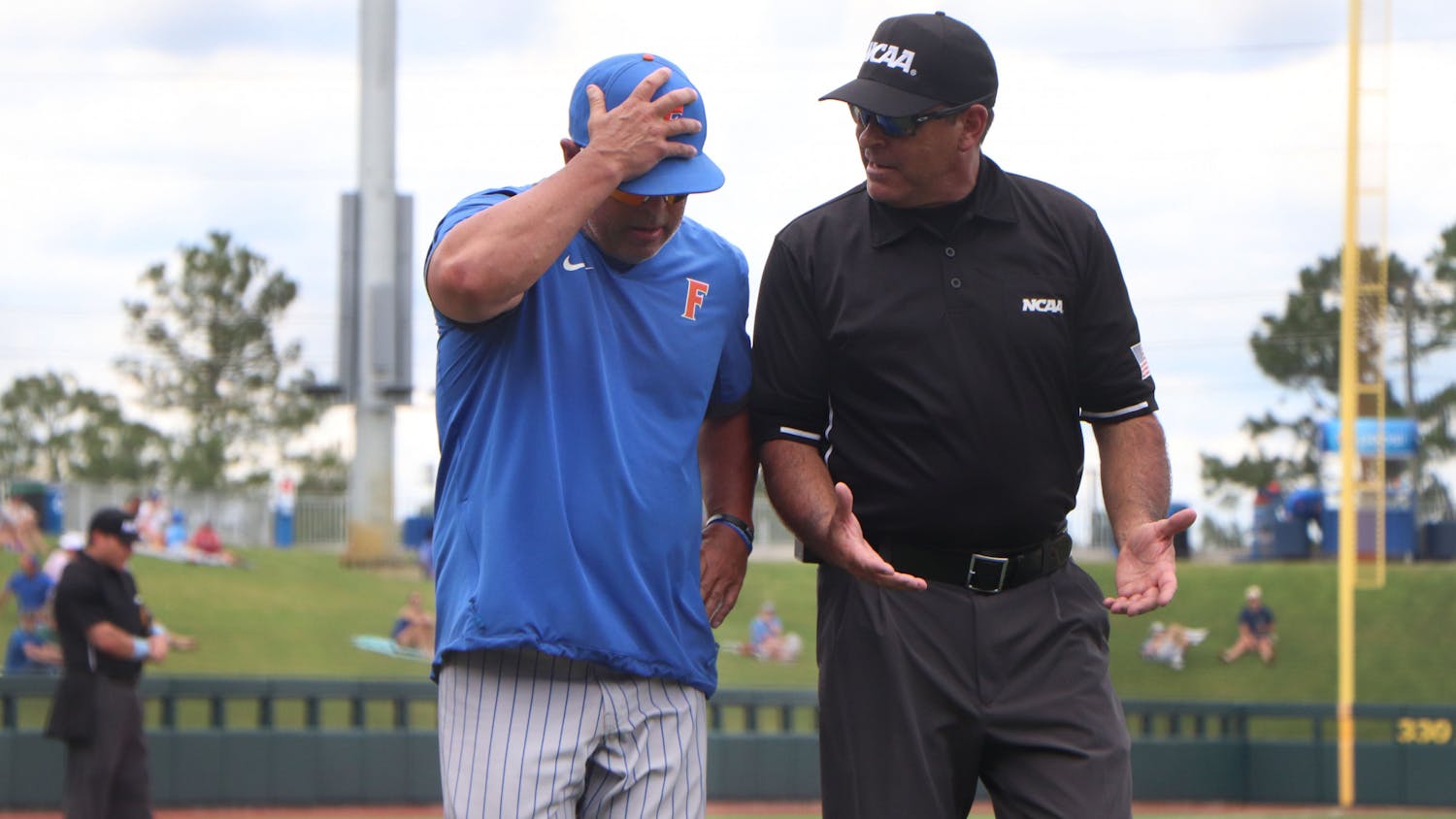Matty Love’s classes require hands-on learning, but for him, this doesn’t just mean inside the classroom. In fact, it is not unusual for Love to bring his work home with him — literally.
The 19-year-old animal sciences sophomore is in the process of preserving a raw cowhide in his living room.
With a huge tarp covering the floor and Enya playing in the background, Love began preserving his proudly purchased hide with a knife and some salt. It didn’t smell, so his roommates didn’t mind.
Love got hooked on the beef industry last semester after taking a class called The Meat We Eat. He ended up changing his major from engineering. This Fall, Love is taking classes like Careers in the Livestock Industry. He works with pigs, sheep and cows from the moment they walk in the “classroom” until they are slabs of meat being prepared for wholesale and retail buyers.
Earlier this month, Love’s 27-student Meat class began their work with cows.
After the class watched instructional videos, read lab manuals and reviewed standard operating procedures, they suited up in their slaughter-day attire: old jeans, T-shirts and boots, waterproof aprons, two layers of gloves, a hair net and a hard hat.
Cows were brought in and stunned, making them numb to pain. Each was then hoisted up by its rear leg, and its carotid artery was severed to drain blood.
The groups of students removed their cow’s head, hide and organs and then cut it down the middle into two halves. After the spinal cord was extracted, they weighed, washed and sprayed the cow with an organic sanitizing spray.
“Since I heard about us doing the beef slaughter, I was really looking forward to the possibility of getting to tan and preserve the beefhide of my first cow,” Love said.
After his lab, Love asked Byron Davis, the manager of the meat-processing center, about purchasing the hide. About $25 later, Love wrapped his cowhide in a couple of bags and put it in his truck. He also picked up 150 pounds of salt.
Love had tried to preserve the sheepskin from his sheep slaughter lab as a test run a few weeks before, but raccoons and cats found the skin outside and soiled it with urine after only a few days.
This time, Love and a friend worked inside. They cut away the extra fat tissue and leftover meat. The two then smoothed salt over the surface, moving on their hands and knees to make sure it would preserve evenly.
Davis said selling hides to students isn’t a regular procedure, but “because he is a student in the class, I made an exception.”
Usually the hides and meat are sold to predetermined buyers.
“For us to have the animals available to use in the class, we actually have to buy the animals,” Davis said. “They are university-raised cows, [and] in order to offset the price of the animals, we turn around and sell the meat.”
As for Love’s living-room preservation experiment, the hide is almost ready. He’ll ship it out on Friday to Sebring Custom Tanning to have it professionally tanned.
“If all goes well, I’ll get it back 10 months later,” Love said.
Then, he might have a more common reason for having a hide in his living room — he may use it as a rug.
Animal sciences sophomore Matty Love, 19-year-old animal sciences sophomore, stretches out on his proudly purchased cowhide. Love is currently in the process of preserving the cowhide.
Byron Davis, manager of the Meat Processing Center, helps Matty Love, 19, on his cut of the cow.






